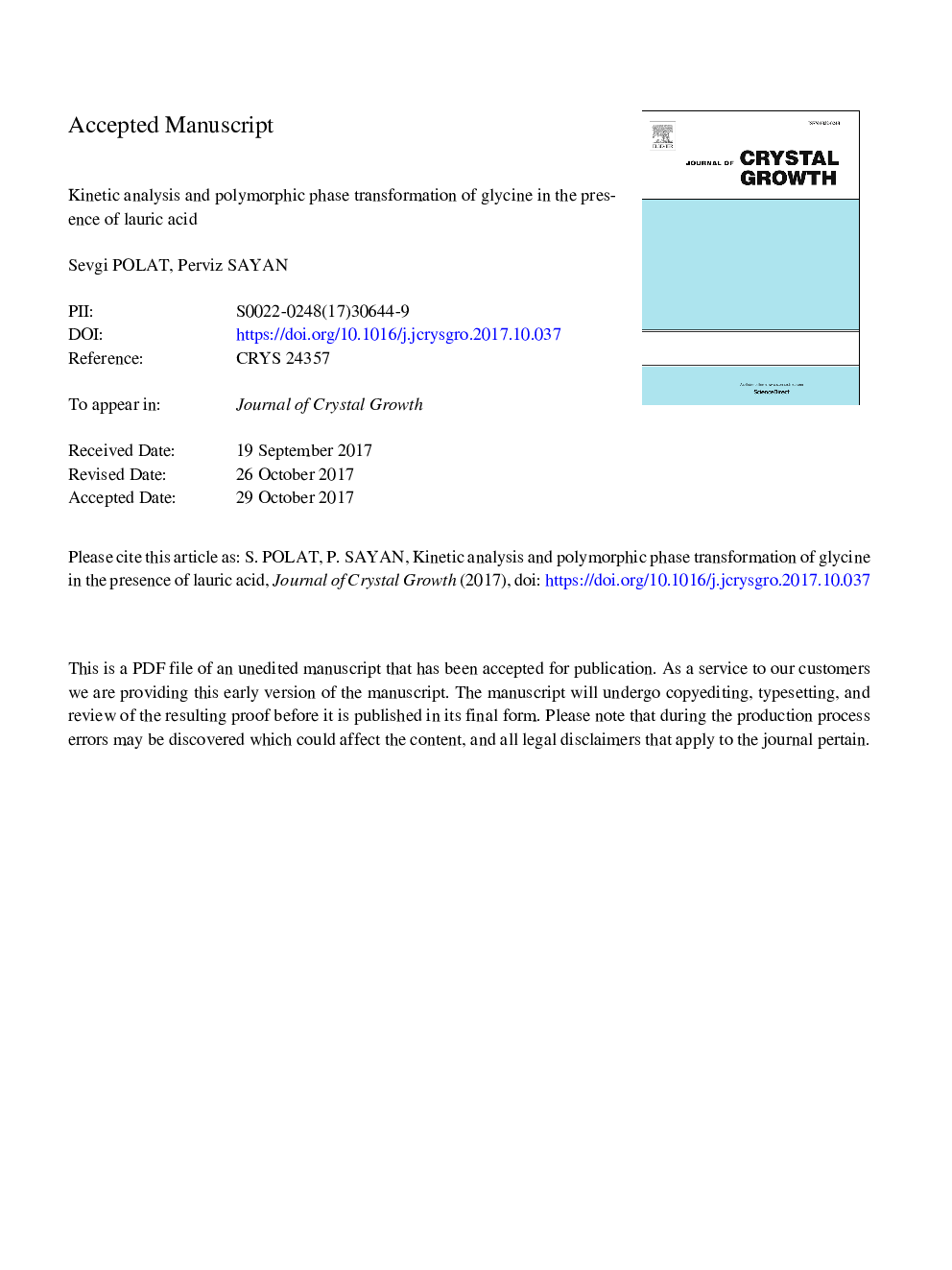| Article ID | Journal | Published Year | Pages | File Type |
|---|---|---|---|---|
| 8149091 | Journal of Crystal Growth | 2018 | 27 Pages |
Abstract
The phase transformation of β-glycine to α-glycine in a water/ethanol media was investigated in terms of its polymorphism in pure media and in the presence of an additive. Lauric acid was used as the additive, and the experiments were conducted in three different concentrations. First, the polymorphic phase transformation was continuously monitored by in-line measuring of the ultrasonic velocity. Next, the X-ray diffraction (XRD) technique was applied for the solid phase analysis of the crystals to confirm the polymorphic transformation of β-glycine to α-glycine. Based on the combination of scanning electron microscopy (SEM) and morphology analyses, it was found that not only the shape but also the size of the crystals obtained were significantly affected by the additive. The crystals obtained were further characterized by means of thermogravimetric analyzer, elemental analyzer and Fourier-transform infrared (FTIR) spectrometer. The attained thermal data were utilized to calculate the activation energy using various kinetic models based on the isoconversional method. The kinetic results revealed that the addition of lauric acid led to an increase of around 10% in the average activation energy of the glycine crystals during decomposition process. As suggested by the elemental and FTIR analyses conducted, this increase could be related to lauric acid adsorption on the crystal surface.
Keywords
Related Topics
Physical Sciences and Engineering
Physics and Astronomy
Condensed Matter Physics
Authors
Sevgi POLAT, Perviz SAYAN,
